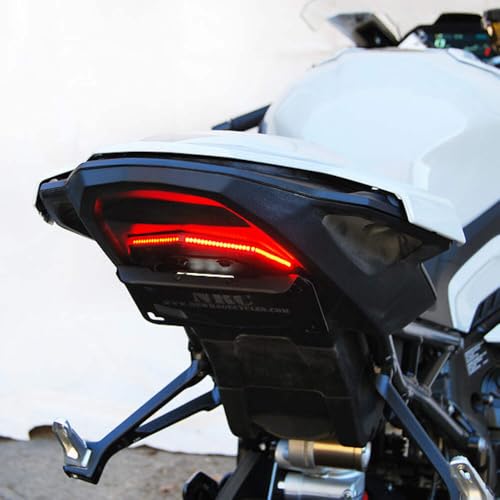2003 (K3, K4)[edit]
Don't know how accurate Wikipedia is, but it has the K5 as 201kgs wet.
After the GSX-R1000 had been three years on the roads and race tracks, Suzuki put out a new version of the model in late September 2002. Suzuki engineers had been working on the three things that made a fast bike faster; weight, power and handling. The 2003 year's GSX-R1000 was improved in all three counts. It weighed less, had more power/torque and handled better.
The physical dimensions of the bike were almost identical with the previous year's model. The seat height and the overall height were somewhat lower but the geometry of the bike was exactly the same as before. The already rigid aluminum alloy frame was newly designed and enforced with internal ribs. The frame as well as the wheels were now coated black.
The front brakes were also new. Suzuki decided to drop the six-piston calipers. The new radially mounted four-piston calipers weigh 30 grams less and grip smaller 300 mm (12 in) discs that save another 300 g (0.66 lb). Though smaller, Suzuki claimed that the new brakes provide better stopping and turn-in performance.
The headlights of the 2003 year's GSX-R1000 were mounted vertically to enable the ram-air intakes in the front to be placed 20 mm (0.79 in) nearer the bike's center line. The new design was very much inspired by the look of the Hayabusa. The instruments were also redesigned.
The cylinder displacement of the engine remained the same 988 cc (60.3 cu in), but more power/torque and better throttle response had been achieved by adding four ventilation holes between the cylinders to equalize crankcase pressure beneath the pistons, moving the air intake nearer to the centerline and upgrading the engine management system from a 16-bit to a 32-bit ECU. The entire exhaust system was now made of titanium to save an additional 1.32 lb (0.60 kg) and the tail light was replaced with LEDs.
The 2003 model carried over to 2004 without any significant improvements.
2005 (K5, K6)[edit]
The 2005 model year GSX-R1000 had a redesigned engine and chassis. It had 4.4 lb (2.0 kg) lower weight than the previous model and the engine had an 11 cc (0.67 cu in) larger piston displacement. It had a totally new frame reducing the total length of the bike by 1.6 in (41 mm) but reducing its wheelbase only 0.02 in (0.51 mm). There were new brakes with radial mounted calipers and 310 mm (12 in) discs at the front. The new titanium silencer (catalytic in Europe) was said to be designed to reduce turbulence to minimum. This model weighs in at a mere 365 lbs dry, putting it towards the top of the power-to-weight ratio charts.
The 2005 model has a tested
wet weight of 444 lb (201 kg).[SUP]
[4][/SUP] Power output is tested 162.1 hp (120.9 kW) at 11,500 rpm and peak torque is 79.9 ft?lbf (108.3 N?m) at 8,500 rpm.[SUP]
[4][/SUP]
The 2005 model carried over to 2006 without any significant improvements other than a few appearance changes.
2007 (K7, K8)[edit]
On September 22, 2006, Suzuki revealed a significantly updated GSX-R1000 for 2007 at the Paris motor show. The new bike gained 14 lb (6.4 kg) over the 2006 model which was due to its new exhaust system and new emissions regulations. To counter this weight increase, Suzuki claimed improved aerodynamics along with a faster revving engine and larger throttle body. Although not a completely new model, the engine and chassis have been updated. It also featured three different engine mapping configurations, selectable via two buttons located on the right handlebar. One up, and one down arrow to cycle between Mode A (unrestricted), Mode B (reduced power until 50% throttle is applied), and Mode C (reduced power throughout the rpm regardless of throttle application). It also received a hydraulic clutch.
The 2007 model carried over to 2008 without any significant improvements.

































